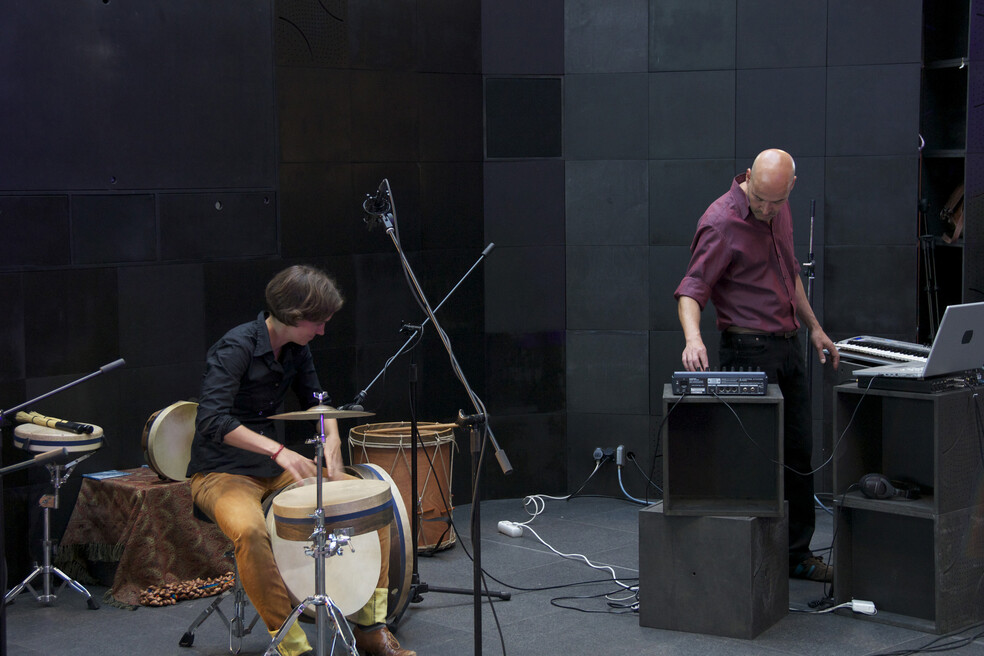Mario Verandi
area: Sound Art
Key Facts
nationality
Argentinaarea
Sound Artresidence
Berlinrecommending institution
TONSPUR Kunstverein Wientime period
December 2019 - December 2019Mario Verandi is an Argentinean-born composer and sound artist living in Berlin. He primarily works with new technologies as an aid to exploring and expanding the boundaries of sound, space and perception. Mario's work is wide-ranging and includes electroacoustic compositions, sound installations, live performances, music for dance, radio works and collaborations with musicians and visual artists. More recently he is working on an electronic/ambient music project. Mario Verandi studied music in Argentina and later at the Phonos Music Studios in Barcelona. He continued his studies at the University of Birmingham (UK) where he completed a doctorate in Electroacoustic Music Composition . After having lived in London for almost ten years, he moved to Berlin in 2001 as a guest of the Artists-in Berlin program of the DAAD (German Academic Exchange Service). He was composer-in-residence at the Electronic Studios of the AdK Berlin, La Muse en Circuit (France), Césaré Studio (France), TU-Studios Berlin, ZKM (Germany) and Cuenca Electroacoustic Music Studios (Spain). He was guest lecturer at the Musicology Department of the Free University Berlin in 2003-2004. His works have been performed worldwide and featured at festivals such as Multiphonies GRM (Paris), Donaueschinger Musiktage, Kontakte (Berlin), MärzMusik (Berlin), Open House Contemporary Argentine Art Exhibition (London), International Poetry Festival (Berlin), Stockholm Electronic Art Festival and Interactive Futures (Canada).
My project is the creation of a multichannel piece based on the sounds and “memories” of the Teatro Municipal de San Nicolas in Argentina. This Italian style theater was inaugurated in 1908 and is today one of the most beautiful theatres in Argentina. The furniture (seats, mirrors, curtains, etc.) were imported from the company “Gebrüder Thonet” from Vienna. The stairs were built using marble from Carrara (Italy). Rafael Barone, an Italian renowned artist who arrived in Buenos Aires around 1883, painted the ceiling frescoes. The opening Gala took place on 10th August 1908 with the performance of the opera “Manon Lescaut” by Giacomo Puccini by the Compania Lirica Italiana Di Bernabei. One of my grand-grandfathers, an Italian inmigrant who worked in the construction of the theater was later appointed caretaker. An apartment was built inside the theater for him and his family. Since then four generations of my family lived and worked in this theater.
The theater still keeps some scenographic machinery and objects that have not been replaced since the old times. Some examples are the rope that rises and puts down the front curtain, some seats and doors, a spiral metal staircase as well as machines for producing wind and light effects. My plan is to work with sound recordings of all these machines and objects. In addition, I will make recordings with musicians playing different sections of the opera Manon Lescaut. Finally, all the materials will be edited on the computer to create an 8-channel sound piece.
The following quotation inspired this work:
" ... you know, an empty theater produces me a spooky feeling. It is as if all the objects and machinery suddenly become alive. And the voices of all the actors and opera singers that once performed in the theater start whispering from the boxes and stalls ... do you think that a dramatic character or the voice of an opera singer continue to exist in a theater, after a performance? ... maybe it haunts the theater..."
(freely adapted from the play Six characters in search of an author by Luigi Pirandello, 1924).



